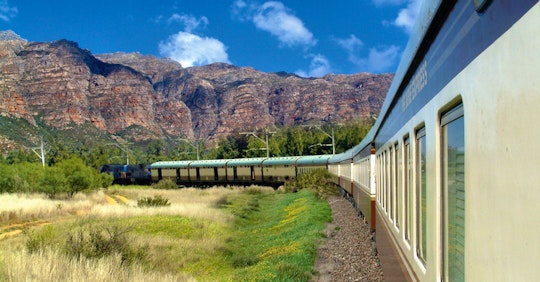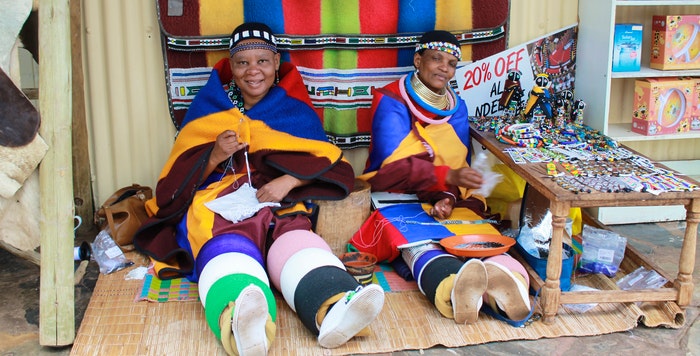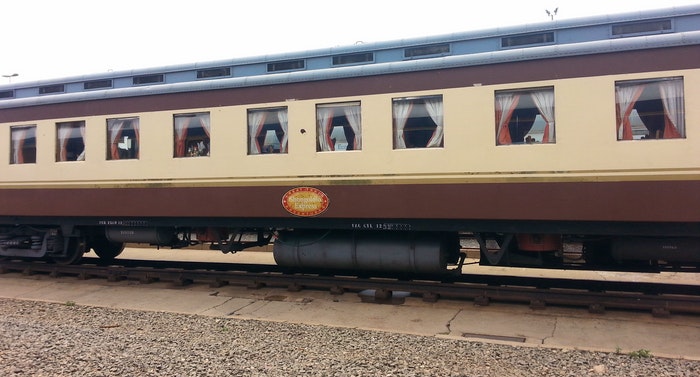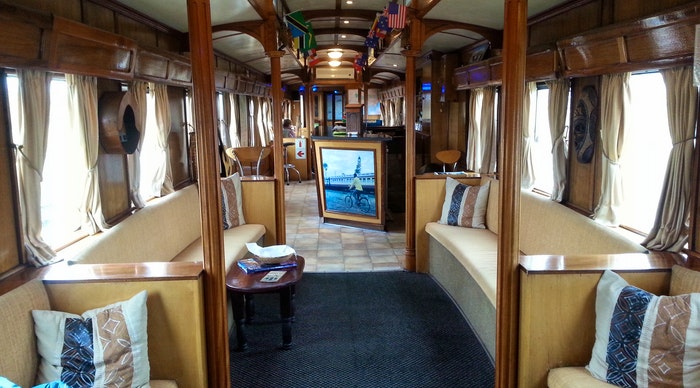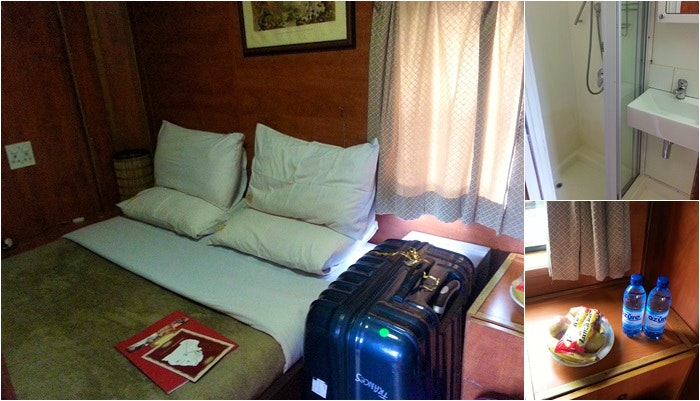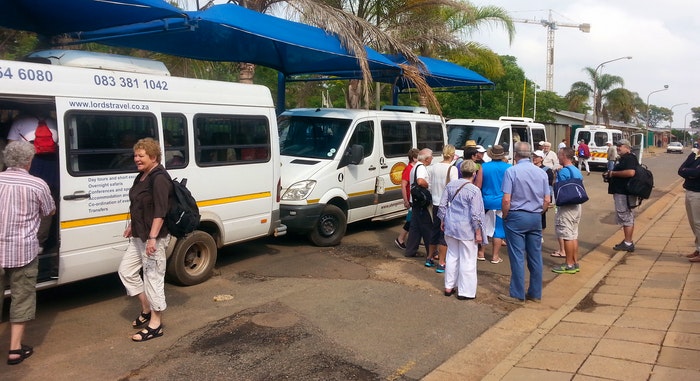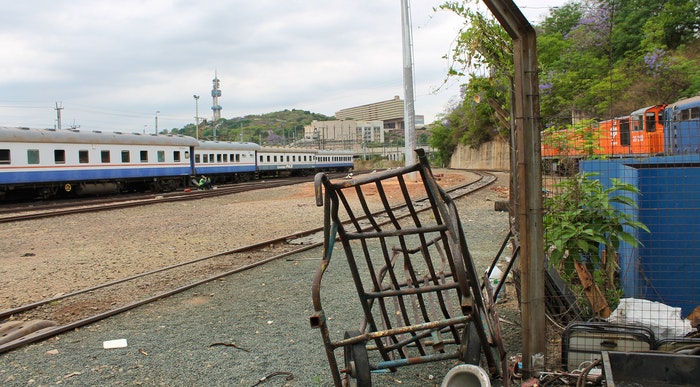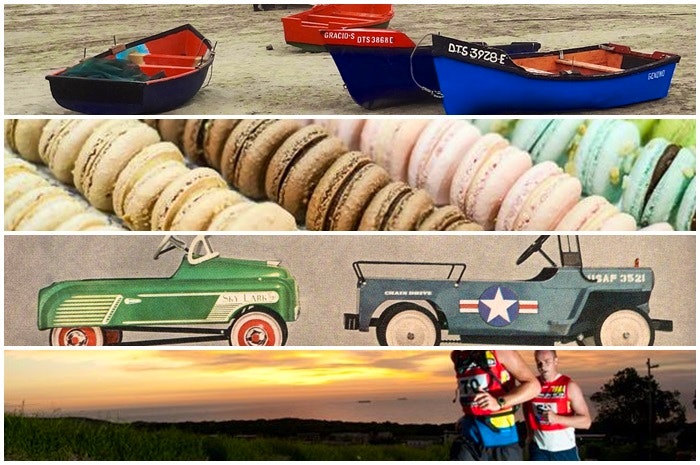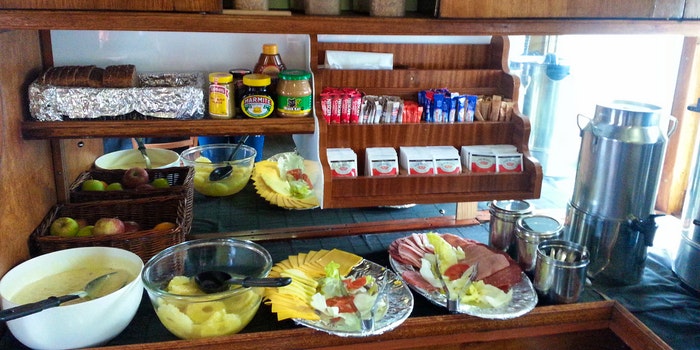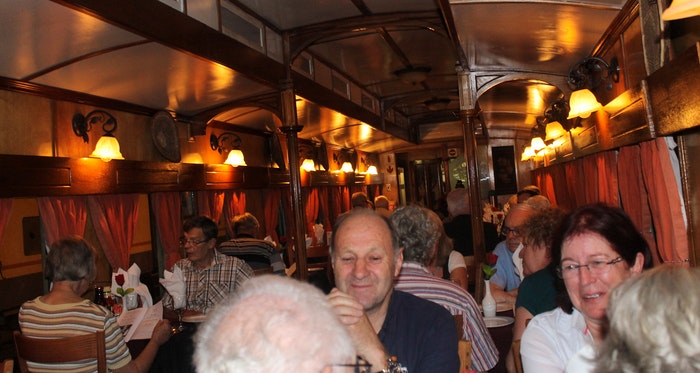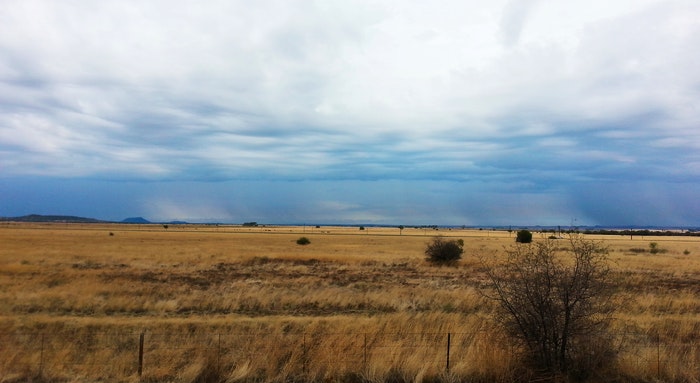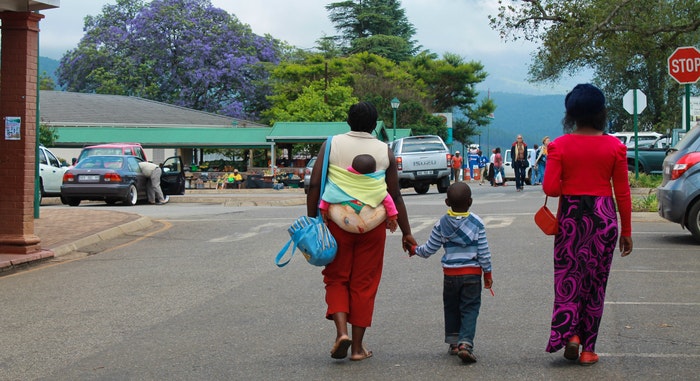Adventure is the motto of the Shongololo Express; a rock ‘n roll South African safari experience by rail. A no-frills mobile hotel if you will. My 2 week stint on the Goodhope Southbound Tour visited all of the highlights on my bucket list like the Big Hole Diamond Museum, the Maropeng Visitor Centre at the Cradle of Humankind, Dumazulu Cultural Village, Swaziland, and God’s Window and Bourke’s Luck Potholes along the Panorama Route – and STILL left me pining for more. Some of my favourite days were spent on a hippo cruise on the St Lucia estuary, shopping along the Midlands Meander, and spotting 4 of the Big Five on a safari in the Kruger National Park. The tour was an exciting whirlwind journey not without its fair share of delays and variations to the itinerary. Welcome to Africa, I guess.
You’re let in on a little secret in the welcome briefing: Shongololo Express is by no means a luxury train. It’s an ADVENTURE train with basic amenities. If you want luxury, this is not for you. If you have mobility concerns, this is not for you. Expecting bells and whistles? The Rovos Rail is better suited to you, at 4 times the price and a third of the journey.
Shongololo is certainly the best choice if you’re looking to really explore real South Africa – provided you’re flexible and aren’t set on a first class train trip. You spend more time off the train than you do on it, as you’re only on-board to eat and sleep. So if the reason for your trip is to explore South Africa, then this trip will be great for you. During your 2 weeks on board you get to travel around South Africa to see all of the highlights between Johannesburg and Cape Town. And you only have to unpack once – yippee! You’ll be grateful for spending more time sightseeing because the train can be cramped, especially at its maximum of 72 guests. As our train manager reminded us: Africa is not for sissies.
The Shongololo Express is the kind of train where you don’t have to put on a fancy dress and navigate between the narrow carriages in ridiculously high heels. It’s about comfort. About family. And I certainly felt it. The guides and crew greeted me by name from the very first day and several fantastic fellow travellers welcomed me into their fold despite the conspicuous age gap. While there’s no dress code, I found it quite amusing that all of the tourists on board seemed to be adhering to some sort of African uniform, the memo for which I did not receive. It seemed imperative to wear white, beige, or olive green, a floppy safari hat, and takkies (with an animal print scarf if you were brave enough to flirt outside of the norm). Oh, and let’s not forget the fancy DSLR camera dangled around the neck.
The train
The train’s carriages date back to 1952. Part of the carriages has been redone, but many, including the lounge and bar cars, are authentic mahogany panelled carriages that speak of a bygone era of luxury. The train has a lounge car with a bar, smoking lounge with a small library, and dining car with a capacity of 38. At the very back of the train is a laundry facility where you can have your clothes cleaned at a reasonable cost. Unfortunately there is no Wi-Fi on board (what is this, the 18th century?). Luckily the 3G connection I brought with, while rather frustrating and inconsistent, had coverage in most areas, with the exception of Swaziland and Lesotho. Remember to set your phone to roaming before you leave your home country or you’ll be left with an expensive but worthless brick in Swaziland and Lesotho.
The cabins
If there’s one piece of advice I can give, it’s to check the dimensions of your cabin before booking. They’re not large, and a few guests were disappointed by the size (or lack thereof) because they hadn’t bothered to check the measurements on the website. The cabins require teamwork from you and your partner when getting dressed and using the bathroom, as there’s just enough space for one person at a time. An Emerald Cabin is the best choice for those looking for a little more space as they contain a small lounge. But if you’re happy to settle for adventure, then any of the cabins will suit you just fine as you won’t be spending much time in your room anyway. Just be aware that the Gold Cabins with bunk beds don’t have ladders and are not suitable for the elderly, and the Ivory Cabins don’t have private bathrooms so you’ll have to share a toilet with the rest of your carriage. If you don’t like the sound of that, pay a little bit more for a cabin with a private bathroom.
I was very happy with my Commodore Cabin. With a double bed, air-conditioning, and bathroom with a reasonably sized shower, small basin, and toilet, I had everything I needed as a solo traveller. But I must admit that if I’d been travelling with a partner, I probably would have felt a bit cramped. There’s not a lot of cupboard space (just a bookshelf and a tiny hanging cupboard) so pack light. There’s enough space to store two large pieces of luggage under the bed or above the door, depending on your cabin. Learning to sleep on the noisy, bumpy train was quite an adjustment. The idea of being gently “rocked” to sleep is probably better rephrased as “jolted”. I became immensely grateful for the nights when the train remained stationery.
Fitness
Shongololo focuses on off-board adventure so you’ll need to be reasonably fit. You’ll have to climb stairs onto the train and buses, and the cabins at the end of the carriages are a fair walk from the lounge and dining cars. The corridors are narrow and only large enough for one (and a half) people to pass through at a time. If you’re concerned about the distance, I’d recommend requesting a cabin that’s close to the communal areas.
Daily activities
Shongololo has a fleet of 10-seater minibuses that travel with the train and chauffeur guests to the various attractions. The buses have air-conditioning and microphones (most of which were working) so that the guides can speak about the sights you’re passing. Unfortunately the vehicles weren’t suited for touring as they had small windows with bars at eye level. One had emergency text sprawled over the glass at the back of the vehicle, which wasn’t great for photos.
South Africa is a large country, so you’ll be doing a lot of driving to visit as many attractions as possible – usually around 300km a day. The average tour departs at 08h00 and arrives back at the train around 18h00, so expect at least a 10 hour day, every day. Most of the day is spent driving and, as an active person, I would have preferred to do more walking. Passengers and guides are rotated each day so you get to know each other very well.
The excursions cover all sorts of interests, from history, culture, and nature, to shopping, food, and sightseeing. Most of the excursions and optional extras run on a majority ruling. So unless we could gather a herd of 4 – 8 likeminded people, our preferred activity would be cancelled. This didn’t pose a threat on most days, but our Battlefields excursion was cancelled due to “lack of interest”.
Stations
The train overnights in small town stations, some of which are pretty basic and a bit run down. Shongololo says this is because it’s quieter and safer to keep the train away from the prying eyes of locals at main stations. I reckon it’s because it’s cheaper.
The train travels on African time, so there’s always a chance that things like power failures, weather, shunting, and other railway red tape can result in disruptions, delays, and unavoidable variations to the itinerary. Near the end of our trip, we spent a full day on board because heavy rainfall and power failures had put us 6 hours behind schedule. This was frustrating because we missed out on a full day in Hermanus and the Winelands. Most of the day was spent reading and playing board games in the lounge car which was quite a relief after the previous weeks’ jam-packed itinerary. The train manager kindly arranged to squeeze in the trips we had missed on the following day, but this meant rushing through the other activities. I caught myself saying “welcome to Africa” one too many times, but our guides kept reassuring us “it’s all part of the adventure”.
Meals
If there is one thing that Shongololo excels at, it’s the food. A 4-course dinner was served each evening, consisting of a salad, starter, main, and dessert. The menu is fixed, but alternative meals can be prepared on request. The food is a mix of Cape Malay and specialties from central, west, and southern Africa. One night we enjoyed a braai on the station platform with an impressive spread of Greek salad, homemade garlic bread, pap and gravy, and a selection of boerewors, lamb chops, and chicken pieces – to be topped off with South African trifle. I loved that when we were in Swaziland, the crew dressed up in authentic Swazi outfits to serve us in theme.
The breakfast is decent too. A buffet is served each morning with cereal, yoghurt, muffins or croissants, tea and coffee, fresh fruit, cold meats, cheeses, toast, and jams. You can order a hot breakfast, which changes daily and can be anything from bacon and egg, to pork sausage and fish cakes. Lunch and drinks are not included in the package, but the bar prices are reasonable. Book early so you can tap into the free refreshment deal!
The crew
There were certainly a few hiccups here and there, but the guides were the saving grace. As locals from Durban, Joburg, Soweto, and Swaziland, they were equipped with first-hand knowledge of the area. They were obviously used to improvising on the fly as alternative arrangements were flawlessly handled. I loved Khosi for her strong, confident, feminist nature; Lawrence for his faultless translations into 7 African languages (helpful at Gooderson DumaZulu Lodge & Traditional Village); Kevin for his amusing nicknames for cows as “domestic Cape buffalo” and speed bumps as “sleeping policemen”; Dorothy, the German guide who saved us from lengthy translations for our non-English speaking not-so-fellow travellers; and PJ for his contagious laughter and wealth of knowledge from 15 years’ experience.
It was fascinating to learn about the different cultures from the guides. For example: Did you know that Zulu people put crosses on the side of the road at an accident site to bring the trapped spirit of their loved ones home so that they don’t haunt passing motorists? Or that each Zulu person is dedicated 3 goats in their lifetime: one when they’re born, one at their wedding, and one when they die? These are just a few of the stories I learned from chatting to the guides, and it made the long car journeys between activities that much more bearable.
The on-board crew were fantastic too. The bar staff doubled as room stewards and I felt guilty when I returned to my spotless room where clothes were neatly folded away each day. They always noticed the odd occasion when I’d skipped dinner, and asked how I was doing the next morning.
As with all tours, much of the day’s success is dependent on the weather. I’d recommend contingency plans be put in place by upper management for days when things don’t go according to plan. It would be beneficial to have alternative itineraries for rainy days, which certainly “rained on our parade” during our time in Cape Town.
People
While Shongololo is great value for money when compared to competitors, it’s still quite pricey for the local market so most guests are international. Our tour had a surplus of Germans and Canadians, but there was also a smattering of people from Belgium, Australia, America, and the UK. Expect an over 60s crowd (although this is in no way enforced), with a few passengers in their late 30s and 40s. No kids under 7 years are allowed on board.
Scenery
We passed through such unusual landscapes that it’s quite incredible to think they’re all within the borders of one country. I found myself staring out of the window completely spellbound by the mishmash of lights, haze of bushes, and landscapes blurring into one, with the wind transforming my hair into that of a crazy scientist. It was fascinating to watch the fierce wall of rain in Bloemfontein transform into a sunny Karoo landscape in a matter of minutes. Mpumalanga was a vast landscape of farming, agriculture and forestry. We passed sugar cane fields, pineapple farms, barren wild banana trees, and forest upon forest of macadamia nut and eucalyptus trees. KwaZulu-Natal was an overload of greenery, continued from St Lucia and iSimangaliso Wetland Park all the way along the Midlands Meander. As we approached the Northern Cape, the scenery turned to golden wheat fields that gave way to the crashing ocean and mountains of the Western Cape.
Tips
- Be prepared for tight quarters.
- Bring hand sanitizer, a good book for the evenings, warm clothes (especially a waterproof jacket that doubles as a windbreaker), South African plug adapters, and ear plugs as the train can be rather noisy.
- Pack snacks for day trips – the itinerary can be unpredictable and lunch times can vary.
- Lunch stops are not set in stone. You can venture off and find something to eat nearby if the chosen restaurant is not to your liking. For example, if the tour stops in Soweto and charges R140 for a buffet lunch, you may prefer to wander off and pick up a sandwich from a supermarket. You’ll save a lot of money and have more time to explore the area you’re in.
- Have fun! Life’s about the adventure, and the journey is just as important as the destination.
What it really comes down to is your attitude and your ability to find beauty in the every-day. The train is the equivalent of a 3-star hotel and without the frills you may be used to back home. But if you can handle a few bumpy, sleepless nights in cramped quarters, you’ll certainly reap the rewards.
If there is one final word of advice I can leave you with, it’s to always expect the unexpected. After all, this is Africa. But if you’re ready for an adventure and come with an open mind, you can have a truly rewarding trip. My tour has fuelled my wanderlust and I can’t wait to get back out there and see the rest of what South Africa has to offer. Check out some cool video footage from our trip.
Would you like to travel on the Shongololo Express?
Main image by Kaapstad.org

